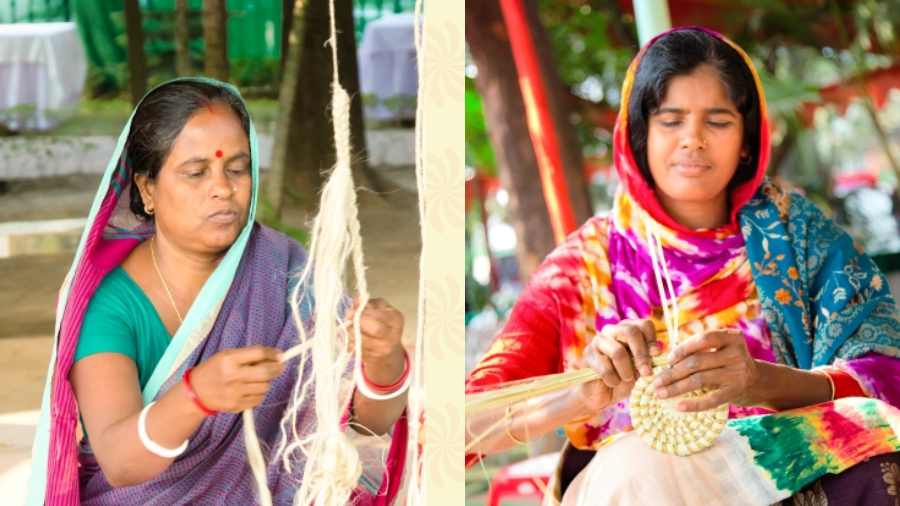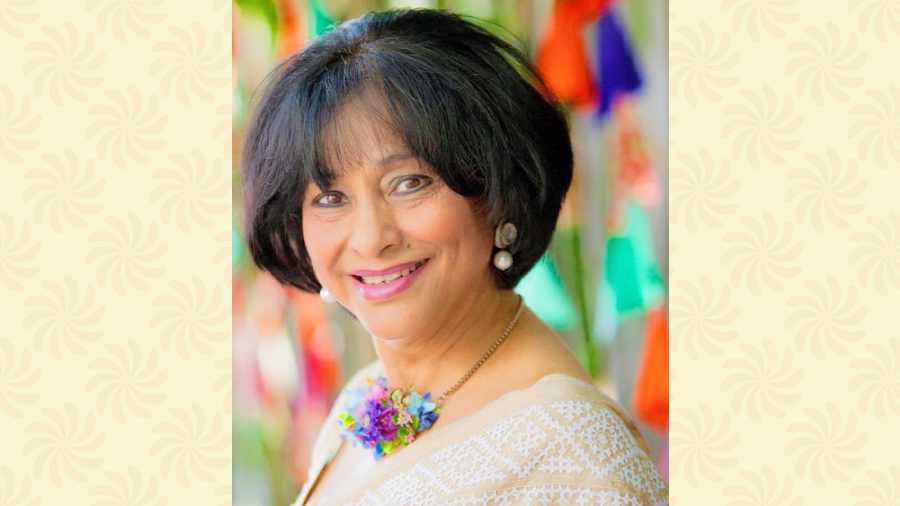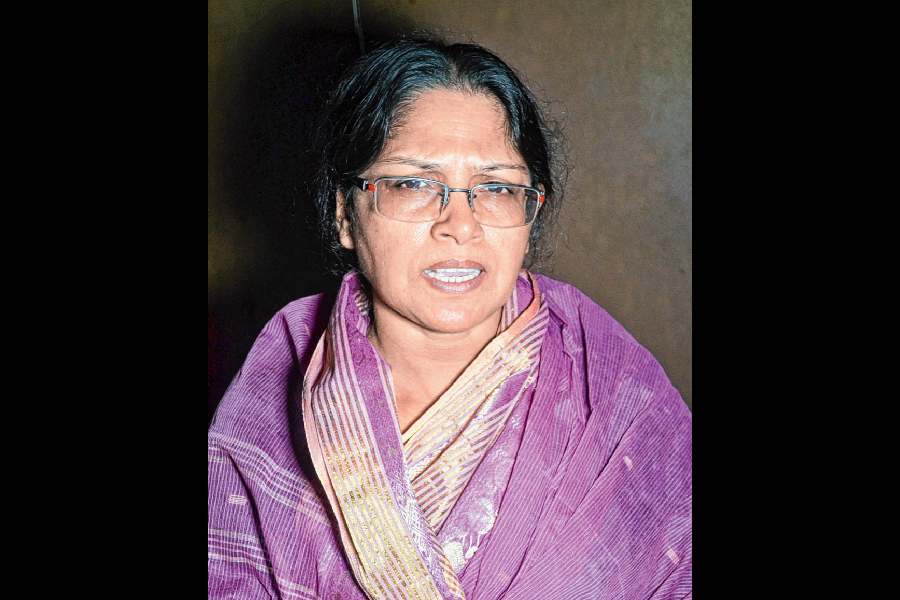The word “influencer” made its official entry into the dictionary two years ago. Tootli Rahman, 66, has been living the description for three decades at the very least.
Rahman herself prefers the descriptor of “designer”, but anyone in Bangladesh will tell you that her best work yet has been preserving, reinventing and putting before the world Bangladesh’s heritage.
She founded the International Weavers Festival in 2016, the Bangladesh Heritage Crafts foundation in 2018 and was elected president of the Women Entrepreneur Association of Bangladesh for 2020- 2022, and that is really the tail end of her resume.
Speaking of shaping perceptions (of a young nation), Rahman began her designer’s career at the potter’s wheel. She tells The Telegraph in a phone conversation from Dhaka, “Bangladesh’s pottery is famed but they have traditionally made small things which were only six inches in size. I wanted them to make bigger things using traditional skills, but they did not have big kilns.”
Close to 40 years ago she built her first kiln and engaged one potter. She says, “I made five-foot-high Bankura horses. I found eager buyers who took them to America.”
Rahman’s interest in textiles and clothes came later. She says, “As a child, I had travelled to several places in Bangladesh given that my father was a government servant. My mother wore a lot of cotton and she used to interact with weavers wherever she went. She inspired me.”
It was only much later, in the late 1990s, that Rahman decided to get herself a more thorough education in her country’s textile wealth. She went to Coomilla to understand its khadi heritage. She learnt about the Jessori stitch or nakshi katha and was determined to revive it when she realised it had fallen into disuse. She talks about the Narayanganj lungi and Pabna gamchha, Roopganj’s Dhakai jamdani, and the Benarasi palli in Dhaka’s Mirpur, where weavers from Benaras had once arrived and settled down. “The textile heritage of Bangladesh is a sum of all these things,” says Rahman.
The Bangladesh Heritage Craft Foundation is working towards the preservation of this very heritage and one of its branches is Heritage Palli — another brainchild of Rahman. At Heritage Palli, Rahman does not want to showcase just Bangladeshi weav s and pottery, but also traditional jewellery — makdi, golap bala, hasuli made of golddipped metal — designed by the famed goldsmiths of Dhaka’s “Old Town” — and items made of jute, balaka silk, khadi and muslin.
As she has imagined it, Heritage Palli is to be a heritage hub of sorts. Rahman says, “It will showcase the essence of Bangladeshi heritage. Starting right from folk songs to documentaries on the history of Bangladesh and the father of the nation, to heritage sites. It would be a platform to educate the younger generation.
The Bangladeshi government is trying to do a lot in terms of preserving heritage but a lot more can be done.”

HEIR LOOM: Artisans working out of their villages for Heritage Palli Image courtesy: Rahman
Between plan and palli, however, came the virus. After delayed labour, Heritage Palli was born on the 50th year of Bangladeshi Independence — but as an online startup project.
For now saris are its mainstay. Rahman has already trained a group of women artisans to paint the saris. She says, “The women of our country have contributed a lot in making Bangladesh what it is today. There was a time when there were only male artisans. But now you will find women artisans. Even in the tribal areas, it is the women who do the embroidery. The garment industry here became what it is today due to the efforts and contribution of our women.”
Rahman continues, “I am not a textile or a garment person at all, but apart from upholding the heritage bit, I wanted to do something for our artisans and weavers. I decided to design the saris they would weave. It would serve two purposes — promote cotton saris and, two, bring some revenue — since I did not have to pay myself.”
This line of Rahman’s saris are highly different and distinct from the expensive designerwear she otherwise retails.
For the new line, Rahman got in touch with well-known artists from across the country, such as Jamal Uddin Ahmed, Rokeya Sultana, Zainul Abedin, Kanak Champa. She is printing their paintings on her saris. She says, “Regular people cannot buy their paintings. If I can reproduce them on the saris we make, many people will be able to buy them.” The painters and, in some cases, the children of the painters who are no longer alive have agreed to let her use the prized works. Here too the final aim is to uphold the Bangla tradition — of wearing saris.
Rahman says, “Earlier, I used to work a lot with the salwar-kameez but these days I am doing more and more saris. The younger generation is quite excited about it. They tell me, ‘Tootli apa, you have taught us to love and wear cotton saris once again’.”










